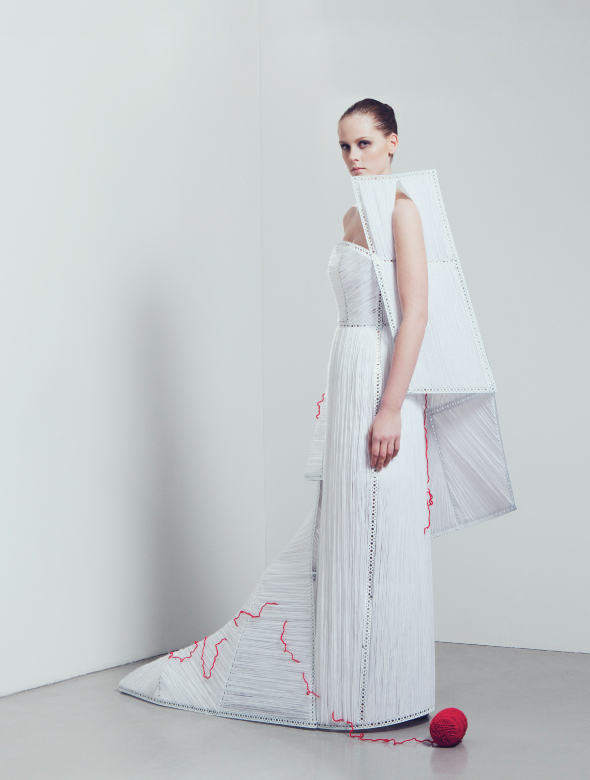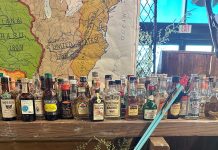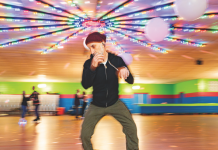
Between the Mayo Clinic, Medtronic, and 3M, Minnesota has developed a reputation as a scientific hub of research and innovation. Our state also boasts a vibrant arts community, with strong support for arts funding and a bevy of cultural institutions and museums, including the Minnesota Orchestra, the Ordway, the Guthrie, the Walker, and the Minneapolis Institute of Arts.
So it’s a natural fit to debut Nobel Creations, a new exhibition that explores the idea that innovation in the arts is inexorably linked to innovation in the sciences. The collaboration was co-produced by Sweden’s Beckmans College of Design, the Royal College of Music, and the Nobel Museum, and launches in the United States this month at Minneapolis’ American Swedish Institute.
The exhibition explores the creativity that unites the Nobel laureates with artists. It includes six one-of-a-kind couture garments created by Beckmans students that take inspiration from Nobel winners in the fields of physics, chemistry, physiology, medicine, literature, economic sciences, and peace. The resulting fashions are sculptural works of avant-garde art. They include an embellished, floor-length coat inspired by a theory of particle mass and made from 85 percent unconventional materials (such as concrete and gravel) and only 15 percent textile. Another undulating silk, paper, and cotton gown was inspired by the unexpected patterns inherent in economics. Wearability aside, the designs show how the imaginative and technical worlds can align.
“Artists and Nobel Prize laureates have a lot in common, because they’re both creative and have a creative process to go through, from the first idea to the final result,” says curator Jeanette Peterberg. “They all do research, experiments, find solutions, re-evaluate, and find new angles. Through art you can illustrate and, in perhaps an unconventional manner, explain science.”
Unusual for a fashion exhibition, each garment will be accompanied by a musical score created by students from Stockholm’s Royal College of Music. In addition to the capstone exhibit, the museum hosts other Nobel Prize–related ephemera, including place settings from the annual Nobel award banquet and a replica of the Nobel Prize medal won by Dr. Peter Agre, a Minnesota native and 2003 Nobel laureate in chemistry. The ASI is also partnering with local fashion event Black Hearts Ball, which will showcase Nobel Prize–inspired looks by homegrown design talent.
Black Hearts Ball producer and designer Tim Navarro tells me the partnership gives Twin Cities designers the chance to explore scientific concepts through looks that marry design, movement, and unconventional materials. “Rather than focus solely on the aesthetics of the design,” he says, “we’re posing the question, How can we use the lessons taught by winners of the Nobel Prize within our industry?”
Indeed, innovation in the arts can inspire change in the sciences, and vice versa—the underwater vessel in classic sci-fi novel Twenty Thousand Leagues Under the Sea led to the invention of the submarine, and Star Trek is credited with inspiring the design of the first mobile phone.
Who knows—perhaps the exhibit will inspire more collaborative chemistry between Minnesota’s arts and science communities.
Nobel Creations
Jan. 31–May 24
American Swedish Institute
asimn.org






